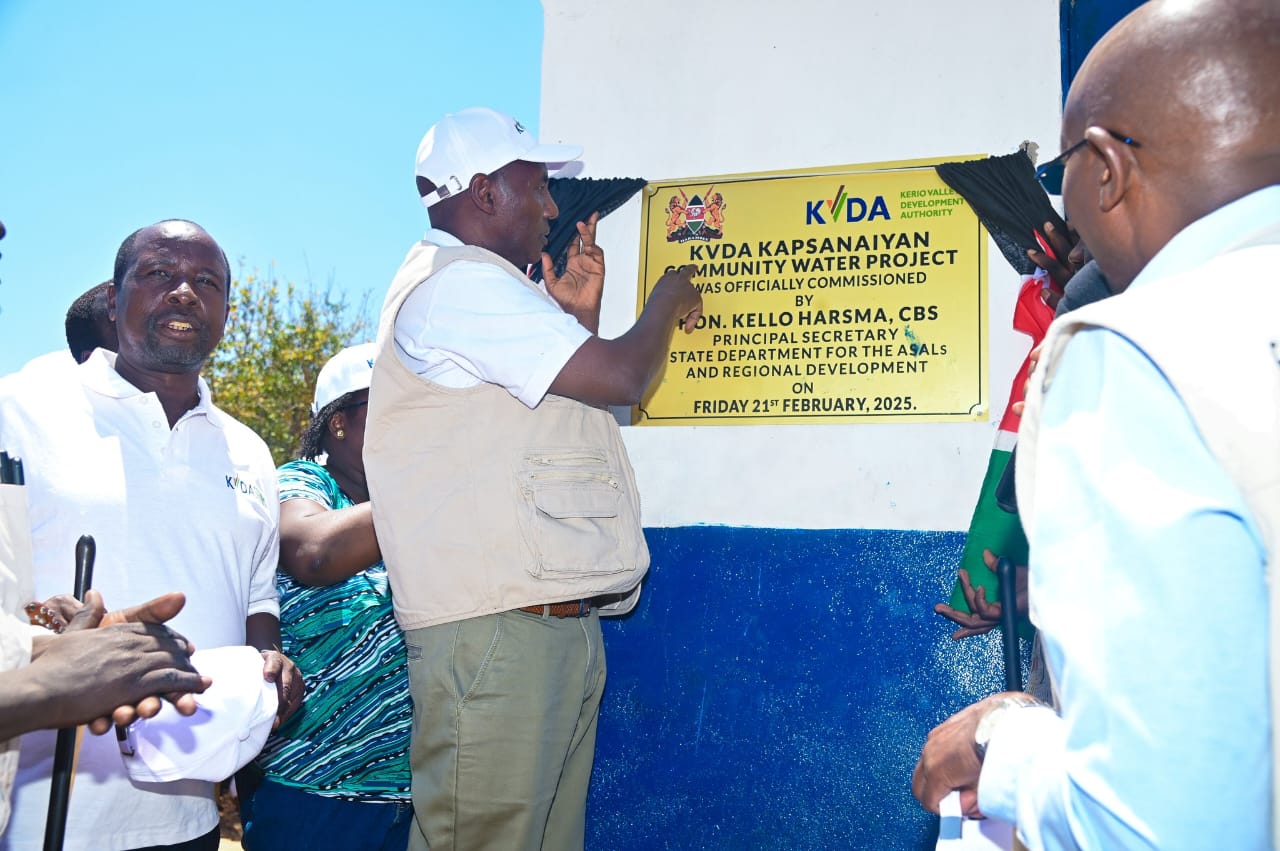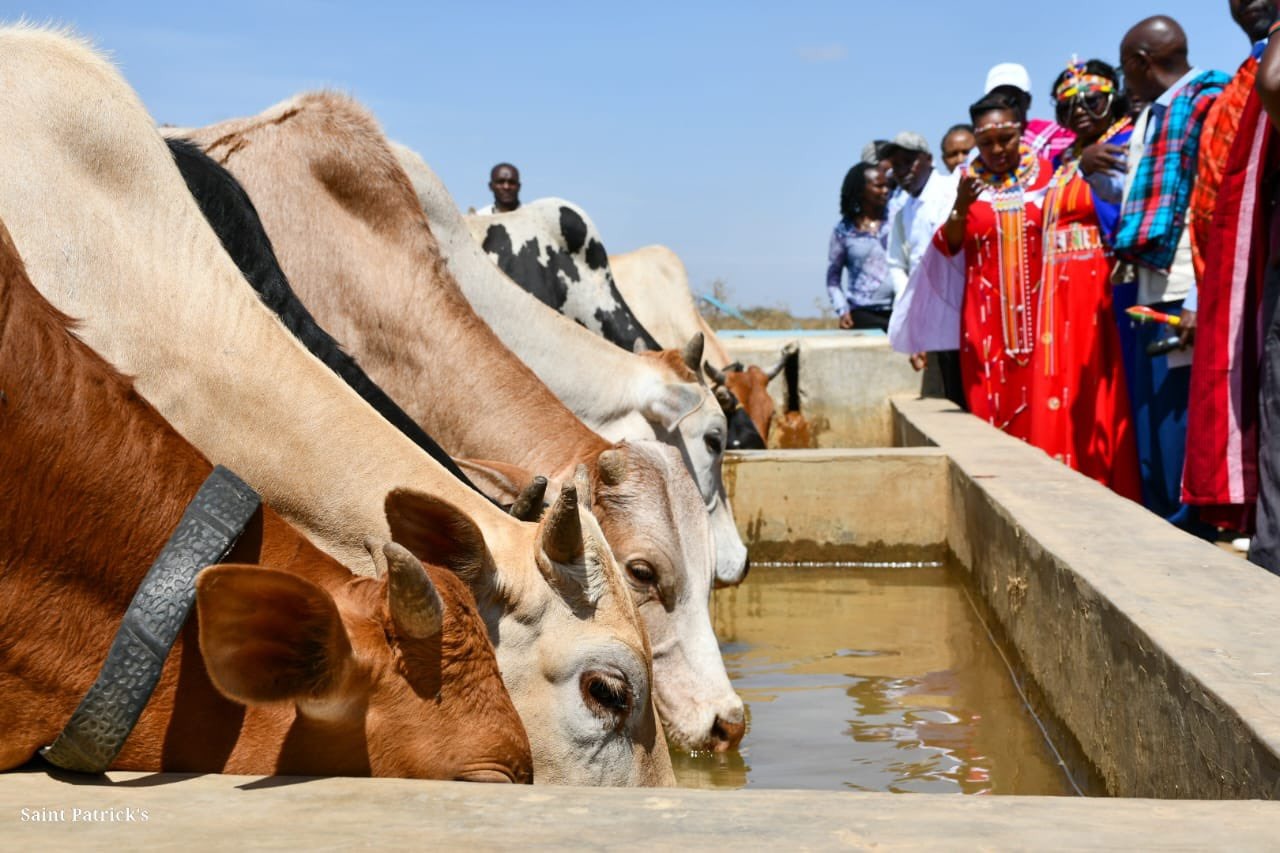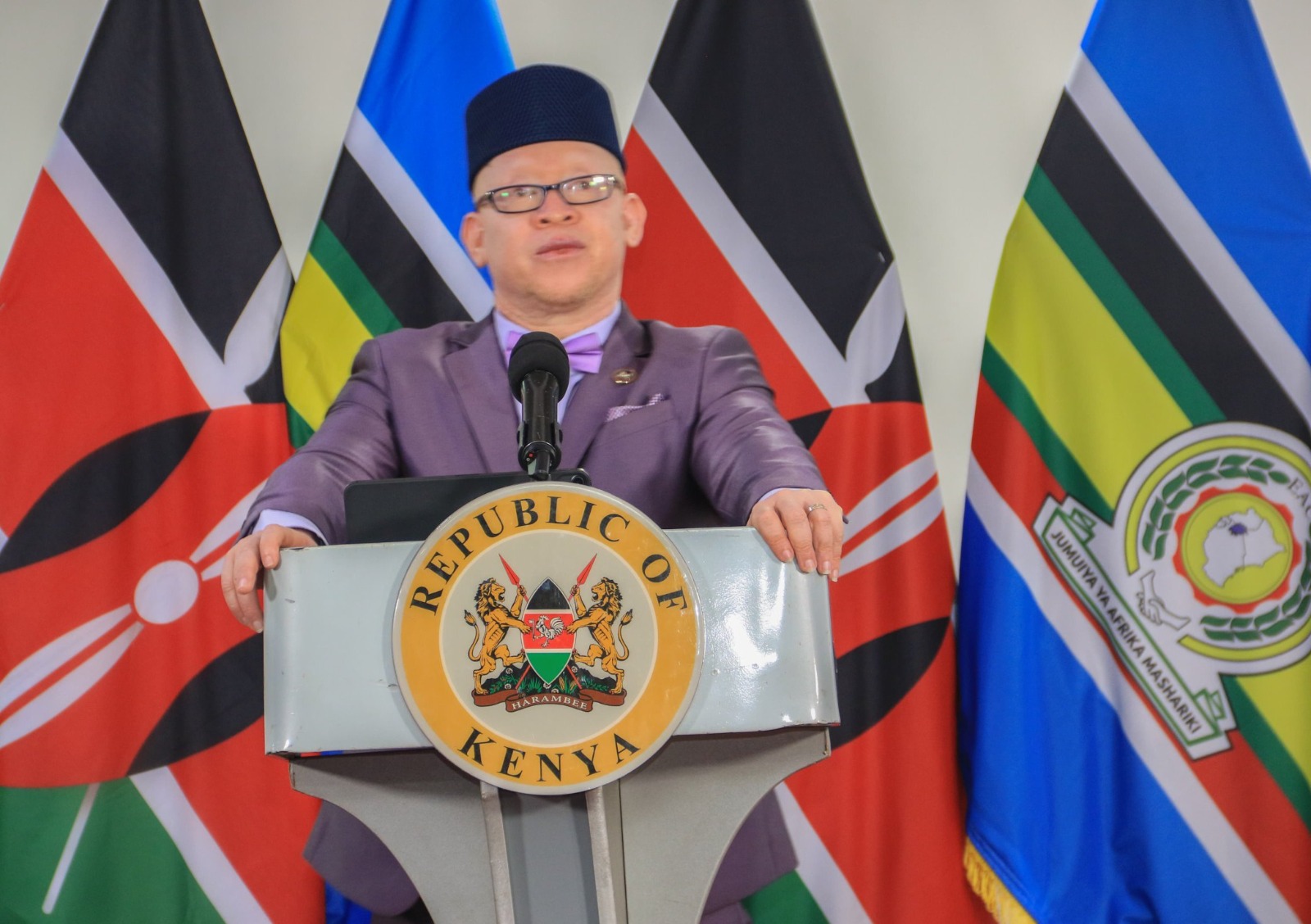
State
Department for the Arid and Semi-Arid Lands (ASALs) and Regional Development, Ps Kello
Harsama, launches the Kipsanaiyan Water project in West Pokot /MATHEW GWEDO
In
Mandera County, women and girls walk for more than six kilometres daily in search
of water, a harsh reality caused by severe perennial drought.
This struggle remains a replica for 16 million people in Kenya’s Arid and Semi-Arid Lands (ASALs) occupying 89 percent of Kenya’s landmass across 23 counties.
Even
as progress is being made to make Kenya a food secure country, ASALs remain
under-developed and remain hunger-prone due to low agricultural productivity.
Agriculture, a key pillar of the Bottom-Up Economic Transformation Agenda (BETA), aligns well with livestock production, a dominant economic activity in these regions and contributes a substantial percentage to Kenya’s GDP.
According to the 2024 Global Hunger Index, Kenya ranks 100 out of 127 countries with serious levels of hunger, with ASALs being hard-hit due to their vulnerability to drought, desertification and erratic rainfall patterns.
These Communities rely heavily on pastoralism and rain-fed agriculture characterised by indigenous livestock breeds and small-scale farming for survival.
Prolonged droughts and diminishing water resources have reduced milk and food production, making the areas highly malnutritious regions with 2.8 million Kenyans at risk of food insecurity.
Approximately 847,932 children and 124,359 pregnant and breastfeeding women constantly require treatment for acute malnutrition.
Beyond Agriculture, tourism forms another key economic driver for the region, which accounts for 90 percent of Kenya’s wildlife and scenic landscapes. These features are quite attractive to tourists and contribute approximately 2 percent to the GDP.
Moreover, this region has a high potential in mineral resources, oil, gas and renewable energy. For instance, through the Lake Turkana Wind Power Project, Kenyans get reliable power as it contributes 850 KWs to the national grid.
On the other hand, cultural practices such as female genital mutilation (FGM) and early marriages persist in some ASAL communities, further increasing their vulnerability.
Resource competition fuels conflicts among pastoral communities, leading to loss of lives, displacement and destruction of livelihoods, with women and girls being disproportionately affected, often becoming victims of gender-based violence and early marriages due to their responsibility for water collection.

Naisula Lesuuda (In group 3rd left) with Cabinet Secretary Ms. Beatrice Askul Moe (in group 4th Left), Cabinet Secretary for EAC, ASAL and Regional Development, during the launch of new boreholes in Samburu County /MATHEW GWEDO
To ensure inclusive development, transformative change is necessary in line with the African Union's Agenda 2063 and the UN Sustainable Development Goals (SDGs) to end hunger, achieve food security, and promote sustainable agriculture.
The Government is privy to these facts and is in partnership with non-state actors and NGOs, committed to reducing the poverty and fostering sustainable growth.
In response, it has created a number of interventions and committed to reducing poverty and fostering sustainable growth across all regions.
This is possible through partnerships with development partners, Non-state actors and Non-Governmental Organisations (NGOs).
“As of today, 1.6 million pastoralists are benefiting from the Livestock Insurance Program (KLIP), which protects pastoralists from climatic shocks. This helps them to recover from the losses triggered by drought and disease outbreaks even as it ensures they benefit from the meat and leather exports for improved livelihoods,” says the Government Spokesperson, Isaac Mwaura
Additionally, the government, a fortnight ago, commissioned the National Livestock Development and Promotion Service Board that will drive value additions in key initiatives, particularly in the leather industry, the Spokesperson adds.
He gives the example of the Kenanie Leather Industrial Park in Machakos County that is projected to contribute Sh175 billion into the economy, providing a one-stop shop for leather, footwear, leather goods and allied industries.
Kenya Vision 2030 and County Integrated Development Plans (CIDPs) remain a guide to sustainable human development that focuses on poverty reduction, financial stability and conflict prevention.
The national and county governments are keen to enhance economic growth and improve the people’s livelihoods, aware that peace and security remain critical enablers of sustainable national development.
The government continues to implement operation “Maliza Uhalifu”, which has brought some stability in the regions and communities now take a lead in advocating for peace among themselves through search for common ground even as they compete for the limited resources.

The Government Spokesperson, Isaac Mwaura, delivers a press briefing on matters of national importance at the KICC Tower/MATHEW GWEDO
Community initiatives such as the Garbatulla Peace Forum, which brought together communities from Isiolo and Garissa to exchange ideas in peacebuilding efforts, is a case in the pointer, observes Dr. Mwaura.
Mwaura echoes sentiments by the Cabinet Secretary for Interior and National Administration Kipchumba Murkomen in West Pokot recently where he called on the residents to not only leave peace efforts to the government.
"If we want to succeed like other communities, we should understand that peace building is not only for government but also our own responsibility,” emphasised CS Murkomen, urging the communities to reject criminal activities.
To avert a crisis due to unexpected climate shocks, disaster preparedness remains key. Through the National Disaster Management Authority (NDMA), early warning systems and strengthened climate resilience through community and capacity-building are being implemented to prevent any possible calamities, particularly during the current rainy season.
Already, the government is supporting millions of vulnerable populations through food security programs to mitigate hunger. Financial support programs like the Inua Jamii are making lives bearable in these regions, whereas the Hunger Safety Net Program disbursed KShs. 332 million to approximately 122,000 members of these groups.
In addition, key Infrastructural developments, including road networks, communication systems, construction of new and rehabilitation of existing markets, security enhancements programs, expansion of irrigation schemes and livestock value addition, are further efforts by the Government to open the regions to more economic opportunities.
Initiatives like the MISA Integrated Livelihood Project in Samburu County, which is supporting more than 1000 farmers with 50,000-liter tanks and three boreholes to improve access to clean water, are also geared toward addressing resource-based conflicts, making the region's food sufficient. A good example is the recent launch of boreholes by the CS Askul Moe in Pirar, Loruko, and Ilmisigiyoi areas.
Other notable investments have been implemented by the Kerio Valley Development Authority (KVDA), including Sh800 million allocated for development projects, including the Kipsanaiyian Community Water Project, and 42 completed water projects in West Pokot to support agriculture.
Similarly, these initiatives continue to ensure food security through projects like the 600-hectare Wei Wei integrated development Project, which produces 800 tons of maize worth KSh. 50 million annually, feeding over 2,000 families
By leveraging these investments, the ASAL regions have the potential to transition from vulnerability to resilience, ensuring sustainable development and improved living standards for its inhabitants.
The government remains aware that increasing production in these areas by protecting farmers and herders from climate risks and market shocks will not only enhance food security but also drive economic growth, Dr. Mwaura notes.
Sheila Tamnai works as a volunteer at the Office of Government Spokesperson











